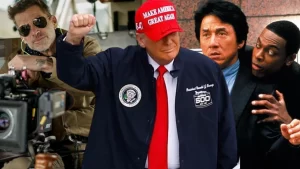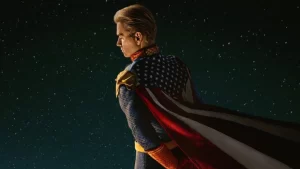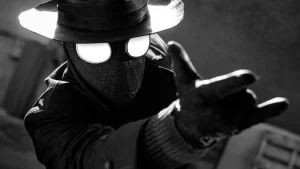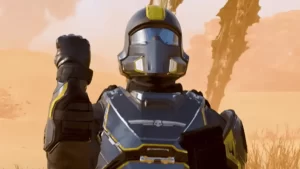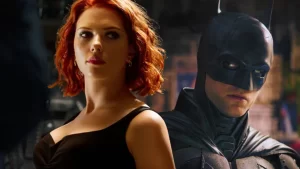The Zombie Apocalypse: Roland Emmerich Style
A Film Review of World War Z
By: Lawrence Napoli
Zombies, zombies, zombies. George A. Romero made them cool in 1968, and they’ve been a mainstay in American cinema ever since. But why are we constantly drawn to these brain-eating, walking corpses? Surely, we can’t all be so morbid with some latent desire to be frightened, threatened and otherwise mortified just “cause.” The key element to the zombie mythos is the theme of survival which effectively represents humanity’s ironic ability to do so despite our real-world history of constantly trying to annihilate each other. It’s all about hope ladies and gentlemen; specifically hope against impossible odds, and that’s something that appeals to everyone, period. Do you know what other genre of fiction revolves around this theme exclusively? Disaster films do this almost as well as zombie stories, but their weakness is exposed as a diluted intimacy as the narrative may be experienced by a smaller group of protagonists, but is always reflected via impersonal global destruction.
Perhaps this unlikely genre pairing is the true reason why World War Z had a myriad of production woes, setbacks, rewrites and creative conflict paving its own road to completion. Disaster and zombie movies have always had extremely different scales to how they told their stories and their combination posed a significant challenge. Sure, lots of zombie apocalypse films make reference to the rest of the world succumbing to the plague, but the audience never really sees the destruction that’s wrought everywhere else because (for the most part) Z-films just don’t have the budget to digitally create such images. Brad Pitt must have maxed out his celebrity favors to help accumulate the near $200 million dollar budget for World War Z, which only shows off its high production value only in certain instances. There are plenty of scenes that pull wide on city wide destruction, but there are as many (if not more) scenes that are minimal, enclosed and prototypical of lower end, undead affairs. Instead of synthesizing a consistent visual style to allow the audience to appreciate both types of settings, director Marc Forster is content to bite off both Roland Emmerich and George Romero in every other scene and jumping back and forth between them is a little jarring.
Nothing represents this sensation better than the fact that the zombies themselves behave so differently in the two settings I just outlined. They are an amped-up, ant-like and hive-minded swarm of monstrous destruction during the big budget sequences while they sputter to standard staggering and lunging whilst indoors. Funnier still is the fact that the bi-polar nature of the zombies is reflected in the screen story of World War Z thanks to the combined efforts of Matthew Michael Carnahan, Drew Goddard, Damon Lindelof and J. Michael Straczynski. Every scene in this film fluctuates between hot action sequences and cold (uninteresting) dialogue/exposition. A stronger dedication to characterization could have compensated by making the audience care more about UN investigator Gerry Lane (Brad Pitt) and therefore care more about scenes that weren’t visually dynamic. But that’s the big problem with this story. While desperately trying to deliver something fresh from a genre that has been a tad overexposed in recent history, the audience gets nil on Gerry’s back story and only the fact that he loves his family to sympathize with. What the heck even is a “UN investigator?” At first, I presumed it was some sort of investigative journalist, but Gerry’s skill set is more reminiscent of a mercenary. And why are a mercenary and his family worthy of the special attention and treatment they receive to be involved with a concentrated effort to save the planet in the first place? Bear in mind, these are the issues that surround the main character, so don’t even think you’ll get anything else from any other character in the cast.
Plot details may be either non-existent or glazed over, but the action, explosions, gunplay and visual effects are front and center. It is in the area of the visual spectacle where World War Z flexes its strongest muscle. Just about every wide angle is a money-shot of destructive anarchy, but the composition of these shots is almost entirely CG. Vehicles, explosions and (of course) the zombies are as fake as Megan Fox’s “talent,” but the fact that the audience never gets too close during these moments allows the filmmakers to mask the “fakeness.” The frame is filled to the brim with so much activity that it is impossible to lose interest, but the proficiency of the CG action is a double edged sword. When juxtaposed with the close-up action driven by standard ballistics and practical effects, the wide angle CG severely outclasses the rest in terms of impact and satisfaction. Traditionally, the opposite has been true even among the most CG-heavy Hollywood films. It’s true that there’s an awful lot of running the audience must endure, but hey, it’s still a zombie movie posing as a disaster film (or is it the other way around?), so there must be running. Still, the action throughout World War Z amounts to some of the best popcorn from a Z-film since Zach Snyder’s remake of Dawn of the Dead.
This film will forever be known for its association with Brad Pitt due mostly to the fact that actors of his caliber simply do not make zombie movies. It will never be known as one of Pitt’s best performances, roles or otherwise contributions as an actor. I understand that the nature of this movie is in a rush to get to the conflict, massive set pieces and intimidating destruction, but it never stopped one of the best hybrid-disaster films in ID4 from giving us characters the audience gave a damn about. In all honesty, I could have used a lot less Joe Black from Pitt in World War Z and a hell of a lot more Tyler Durden. The world may be crumbling all around you and your family is out of harm’s way, so your character plays it cool and collected for the remainder of the movie? Where’s the anger? Where’s the aggression? Is Brad Pitt’s Gerry Lane a secret saint that disallows himself to go feral in the least to fight the good fight? Pitt’s performance equates to too much of a nice-guy-dad to be entrusted with saving the world from walking cadavers. Tom Hanks (the perpetual celebrity nice guy) gave us a bad a– performance in Saving Private Ryan, but he also had the luxury of an R-rating to give the audience a more realistic and horrific take on a soldier in various war zones.
, but it never entwines the audience with enough intrigue to become fully immersed in the fictional danger of this world. Good disaster and zombie films deliver a tiered escalation of loss and destruction, but this film paints the world as having ended at the onset of hostilities. Without delivering that sense of loss, there’s no chance for a character, let alone the audience, to appreciate the road to saving it. I loved the zombies whenever they behaved like a tornado of gnashing teeth, and I loved the action whenever I was exposed to an epic scale. Unfortunately, other aspects of a good Z-film like devotion to character and character relations are noticeably absent in WWZ so it’s difficult for the audience to make a personal connection to the loss of civilization when no main character loses anyone close to them during the overall conflict. World War Z is the polar opposite of AMC’s The Walking Dead, but it’s still an entertaining (albeit safe and formulaic) depiction of zombies on film. The fiery hype that preceded this film should have been doused the instant we all learned this film was rated PG-13. Recent history has shown that not all movies fall prey to that shameless, money-grabbing rating, but I simply don’t think anything less than an R can deliver a solid zombie apocalypse.


